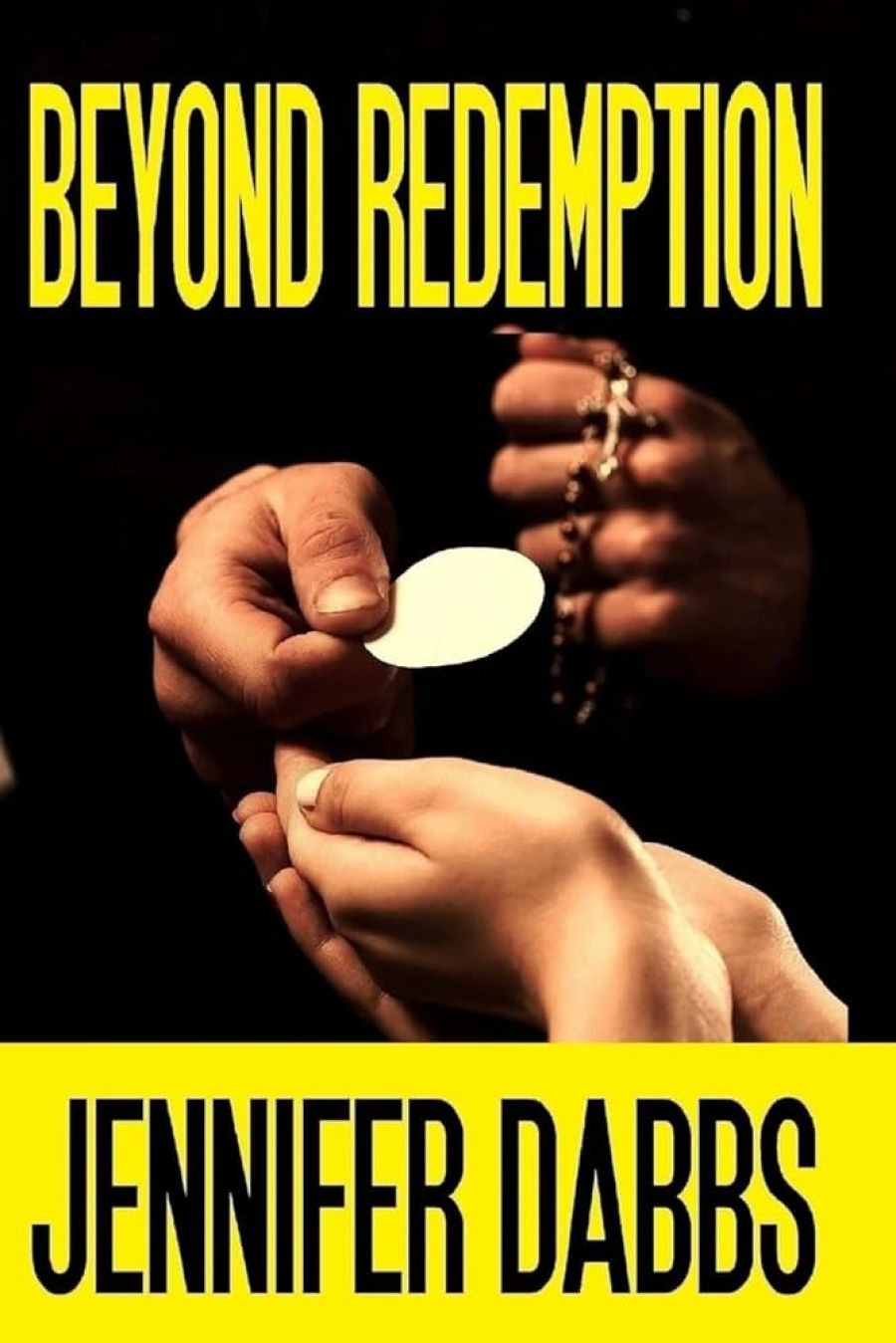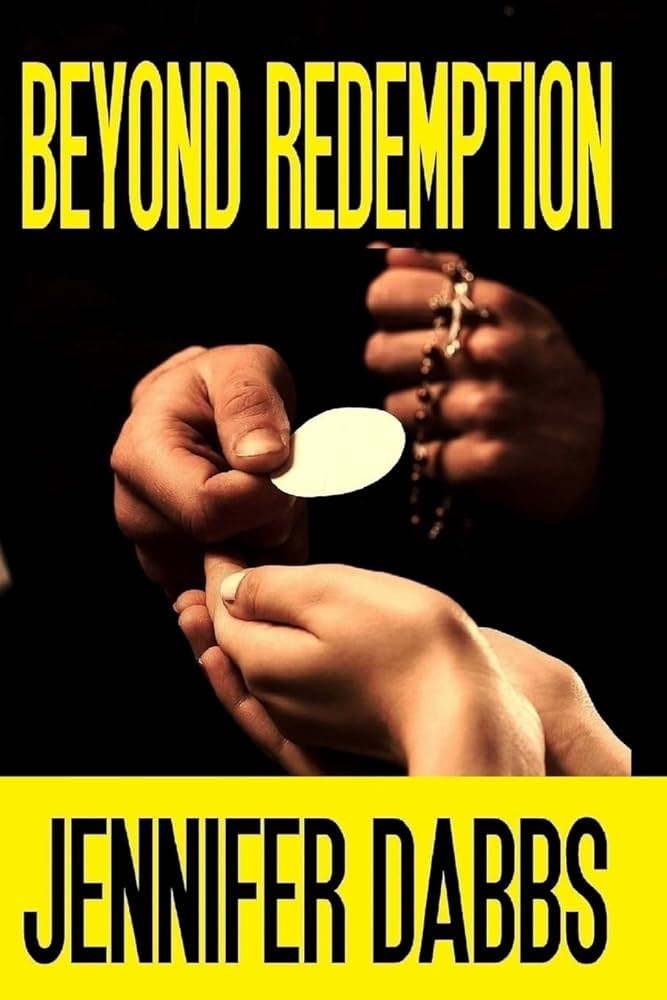
- Free Article: No
- Contents Category: Fiction
- Review Article: Yes
- Article Title: Whatever Happened to Mary Kathleen?
- Article Subtitle: Growing up in the clean fifties
- Online Only: No
- Custom Highlight Text:
The jacket blurb describes Beyond Redemption as ‘a novel about falling rapturously in love in the dark ages of the nineteen fifties.’
- Book 1 Title: Beyond Redemption
- Book 1 Biblio: Penguin, 258pp, $9.95 pb
- Book 1 Cover Small (400 x 600):

- Book 1 Cover (800 x 1200):

A time for establishing, once again, in the aftermath of a European war and in the face of an influx of European migrants, just what is and what is not ‘Australian’.
It’s a question of context. Both sides of the cover insistently locate the novel in terms of sexual mores and morals, in personal terms: a novel of sexual daring, a love story, a brave girl ‘growing up in spite of the voices that say “no”.’ A book, perhaps, in the great tradition of the ‘spirited girl-heroine’ of Australian literature (with the likes of Sybylla Melvyn and Ethel Turner’s That Girl).
But for me this is too easy – too black and white, like the characters: the Irish-Catholic mother who is insular and clannish, the gentle-but-masculine father, who is tolerant and loving.
It’s easy to make Kathleen a heroine by citing her as a proto-feminist, a liberal-minded girl with strong passions and high ideals in a repressive world. It fits well the mythology of progress and sexual revolution: the dark ages of the fifties where these things happened, the new enlightened age of the eighties where they can at last be spoken of. Young Girl throws off Out-Dated Ideology and becomes Self-Defining (the true individual). But how self-defining is Kathleen? To what extent is she fighting against the dominant forces of her time, and to what extent is she fighting for them?
Like the nation, in defining herself Katie also defines (creates) an Other: she defines herself by what she is not, by forming alliances and drawing battle lines.
The characters are vividly drawn, but I found it difficult to decide whether they are ‘realistic’ or merely familiar: I could, for example, easily imagine them on the small screen, in period costume, in some future mini-series. More than anything they are arguments for one world-view or another – alternatives and signposts, lessons for Mary Kathleen.
The first sentence of the novel establishes the two sides of Kathleen’s world and leaves little doubt as to where her sympathies lie:
I don’t think it ever occurred to Mother that my father could be killed or injured in the Second World War: she just wanted a good excuse to go back home to her mother.
For the Clancys, her mother’s family, the war is a welcome thing: ‘all for the best’. It is a chance to re-unite; it means jobs for all – even women – after the hard years of the depression. Significantly, none of the Clancy uncles foes to war. The world of her mother is cold and narrow, dominated by women, by Aunts and nuns.
Her father, on the other hand, is associated with a wider, masculine world, a public duty outside of self and family, above sectarian concerns. While her mother’s life is ruled by the holy seasons as decreed by the Church, her father, a keen gardener, is ruled by the seasons of nature.
To Katie, her mother’s intense love for her grandmother is inexplicable, a sign of weakness. She and her father resent the intrusion of the extended family into their lives. They ‘can’t wait’ to be in a home of their own – a suburban house with a backyard and indoor plumbing. A ‘real’ home, a modern space for a modern family unit.
At school Katie is crushed to learn that religious knowledge is more highly regarded and better rewarded than academic excellence. She wants to be popular, but her growing refusal to accept unquestioningly the teachings of the Church makes her a misfit. She develops string passions for her girlfriends who invariably betray her for boys. Later, she too finds liberation via sex with a man. After this passionate (and highly improbable) love affair she has only contempt for the Church leaders (‘Sterile. Useless. And celibate.’). She allies herself with her father – unprejudiced, non-sectarian: ‘just plain old Australian.’ But is there really such a difference between non-sectarian and anti-sectarian?
Katie’s hatred of her mother, her mother’s religion and her mother’s Irish roots is vehement. ‘Not at all like a Clancy, not one bit like a Clancy’ is a badge of honour – a result of mixed parentage (Hannah’s German father, her own ‘Australian’ one). Yet when she looks down her nose at so many others (the ugly, the sick, the smelly, the stupid, the timid, the tone-deaf) she is surely her mother’s daughter: the object of contempt is different, the attitude is pure Clancy.
I also found disturbing her encounters with migrants in the book. Both occasions end in displays of violently unpredictable behaviour on the part of the newcomers. One throws a tantrum, the other (who is ‘not right in the head’) has a kind of fit. Bewildered, Katie concludes, ‘Maybe Mother was right after all; maybe refugees weren’t such a good idea … ‘ In effect, Katie emerges blameless, while the ‘refugees’ show themselves to be mad, unintelligible, and grasping.
But the novel is very well written and often funny. Nuns and sex and sin always make good copy and Jennifer Dabbs has used her material well. We’ve got an enormous appetite for stories about growing up, we love telling and listening to them over and over. It is part of the endless task of self-definition: drawing a line from birth to death, charting our progress, plotting the peculiar curves, the special colours. Just look at the way in which the Bicentennial has spawned such a host of narrative histories, biographies and autobiographies: this is where we are now, this is where we came from.
But where is Mary Kathleen now? Who is remembering, retelling all this? Who is selecting the facts and colouring them, emphasising some, arranging the sequence, choosing the words?
The code of the realist first-person narrative demands that each episode be narrated from the point at which it occurred – the child’s eye; you must never get the feeling of the later historian, the adult arranging and selecting and interpreting the past. Jennifer Dabbs sticks to this rigidly and competently. We are prevented by a range of literary and narrative devices from ever glimpsing the adult Kathleen whose life, shaped by events, now works back onto those events, shaping them for our consumption. Is it narrator we can trust? If she is shaping the events (and every act of writing involves this), to what purpose is she doing it? Questions, surely, we should ask of every history – fictional or factual, individual or national.


Comments powered by CComment